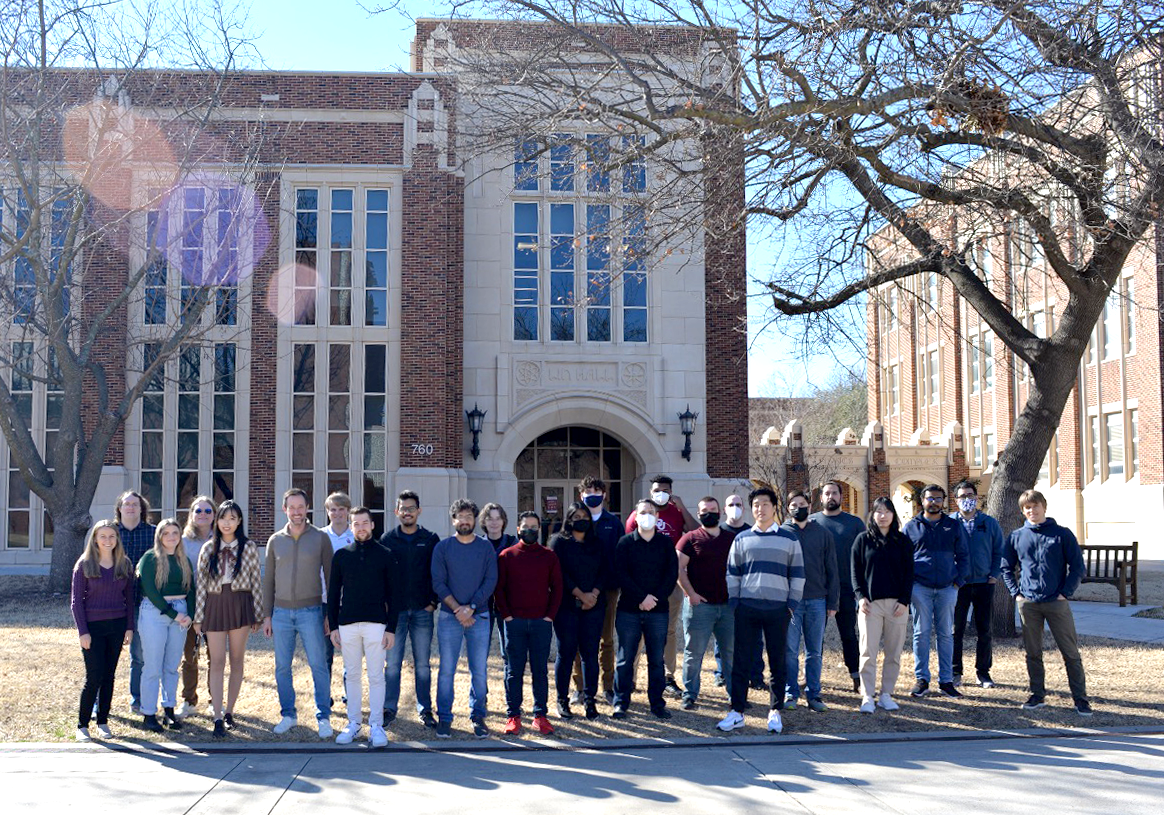Every summer, fireflies light up the night sky searching for their mates, but something interesting happens when the number of fireflies in a given area reaches a certain density – their flashes synchronize. Rather than isolated flashing, each glowing firefly in a swarm luminesces together. This kind of naturally occurring synchronization has physicists interested in how to replicate the phenomena at the quantum level using atoms and light.
With potential implications for network synchronization over fiber optic and wireless channels, like how a smartphone can connect to a laptop, or even improving electrical power systems, the ability to create synchronization is the aim of a new research project led through the University of Oklahoma’s Homer L. Dodge Department of Physics and Astronomy and the Center for Quantum Research and Technology. The CQRT is housed in Lin Hall, OU’s newest academic building and one of only a few buildings in the world to meet the requirements of the National Institute of Standards and Technology on vibrations, temperature and humidity, as well as electromagnetic interference.
The three-year project is funded through a $1 million grant from the W. M. Keck Foundation and is led by Professor Doerte Blume, Ph.D. Blume is working with CQRT researchers Grant Biedermann, Ph.D., and Alberto Marino, Ph.D., with the support of postdoctoral researchers and graduate and undergraduate students, to develop quantum synchronization and quantum organization, combining both theory and multiple experimental approaches – one using optical tweezers and one involving quantum light.
Blume is providing the theoretical expertise that underpins the project’s multiple experimental approaches, one using optical tweezers and one involving quantum light. She is also leading the network modeling that will attempt to bridge these experimental approaches.
Optical Tweezers
Within the last decade, the field of quantum research has advanced to a state where it is possible to contain and control a single atom in what’s known as an optical tweezer, a technique that uses a highly focused laser beam to hold and manipulate something as small as an atom.
“We're trying to synchronize the motion of atoms among neighboring tweezers … by coupling them together with electric fields,” Biedermann said. “No one’s really explored this type of synchronization. The types of synchronization between these atoms and the resulting structures that you can create in this abstract space are vast.”



